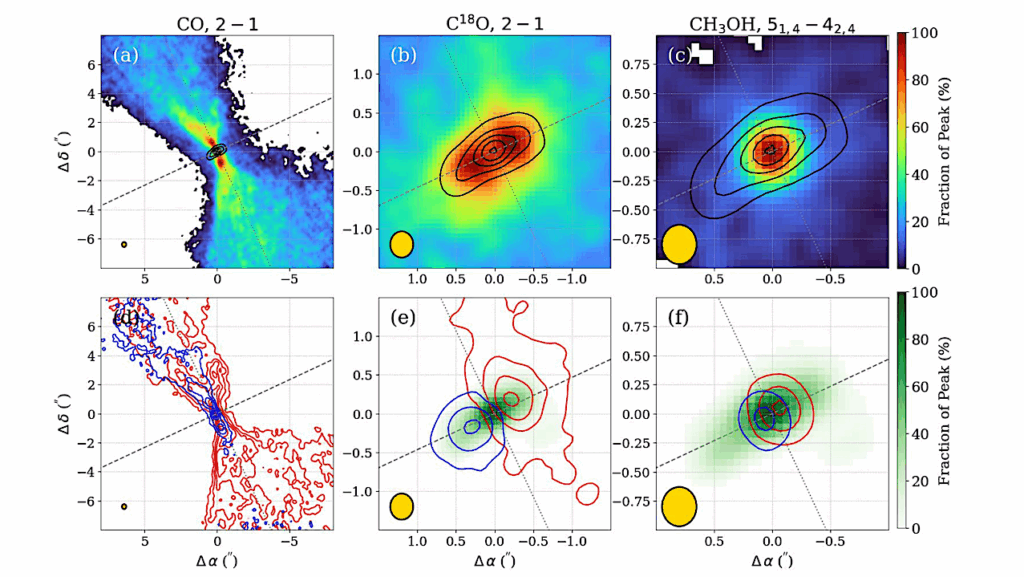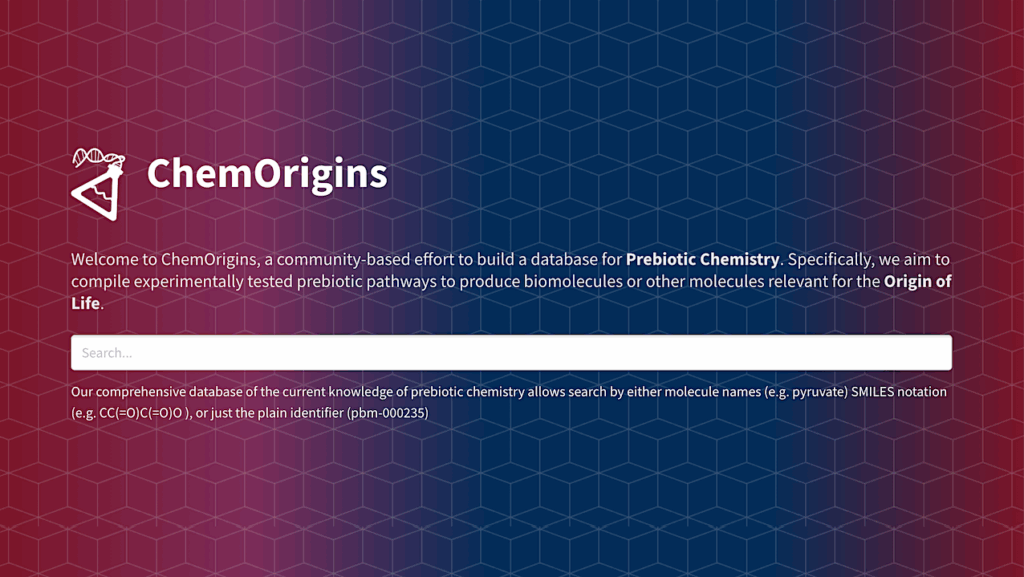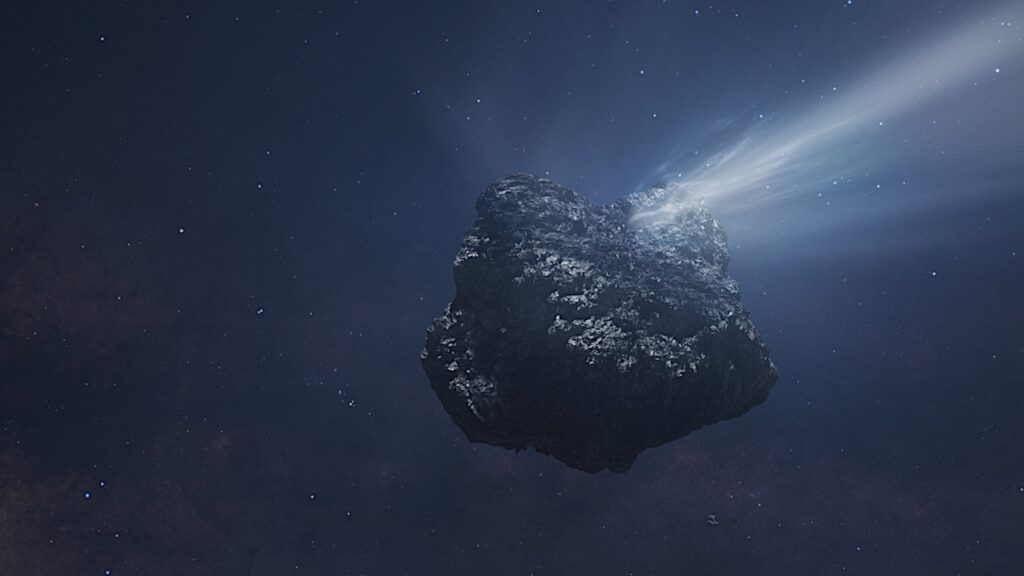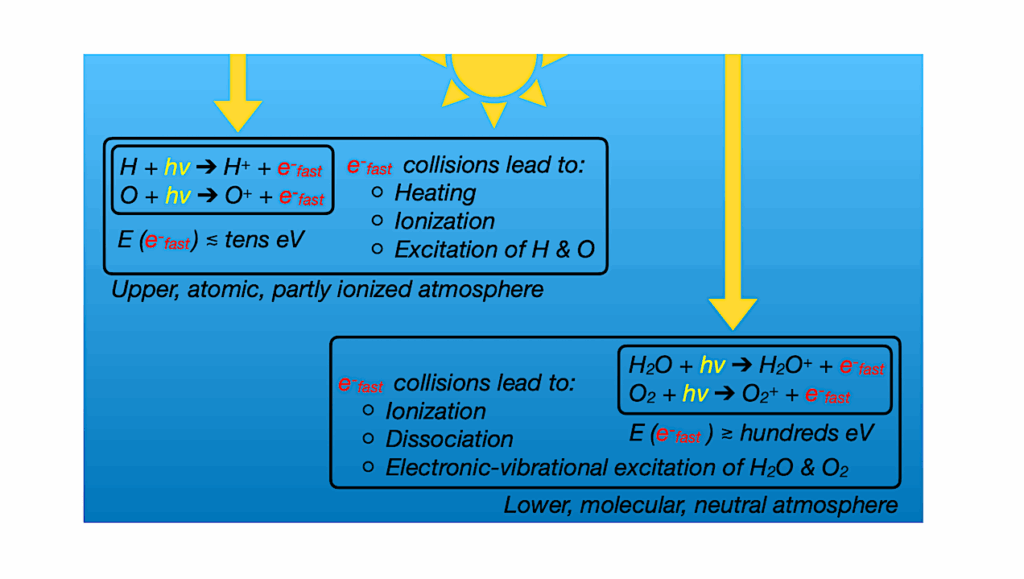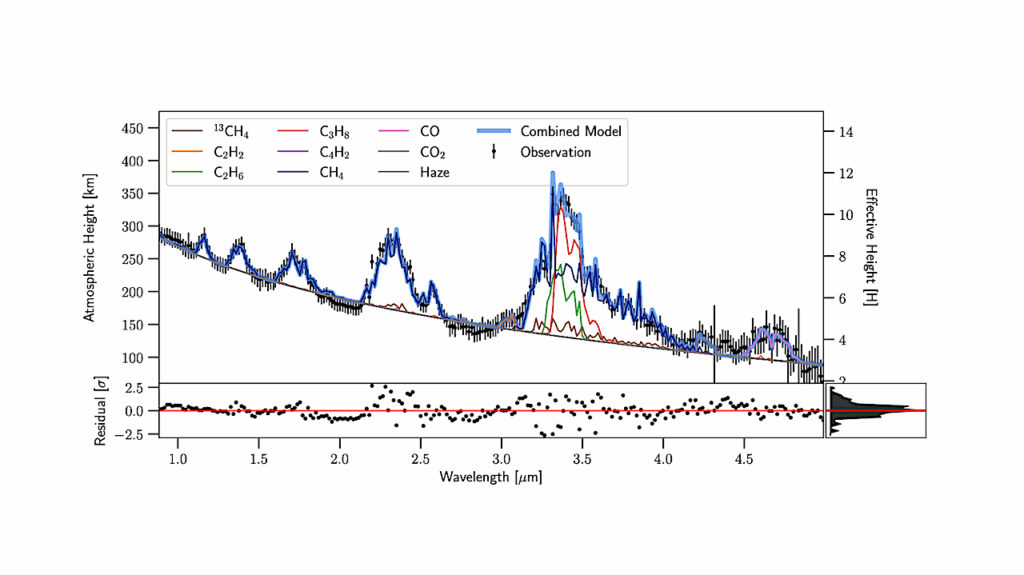Carbon Dioxide Observed In Exoplanet WASP-39 b’s Atmosphere By James Webb Space Telescope

A team of planetary scientists, including Arizona State University Associate Professor Michael Line, have detected carbon dioxide in the atmosphere of a gas giant exoplanet with the James Webb Space Telescope (JWST).
The discovery demonstrates the long-awaited capabilities of JWST to observe the atmospheres of planets outside our solar system, revealing their composition and formation histories. These results open the door to the possibility of learning about the composition of smaller rocky planets that are thought to also have carbon dioxide in their atmospheres.
The results of their findings have been accepted in Nature, titled “Identification of Carbon Dioxide in an Exoplanet Atmosphere.” This is the first accepted publication detailing exoplanet observations with JWST.
The gas giant exoplanet WASP-39 b was discovered in 2011 and orbits a star similar to our sun but 700 light years away. It has a mass approximately that of Saturn and it takes only four days to complete one orbit of its star, making it extremely hot, about 1,400 degrees Celsius. WASP-39b and other transiting exoplanets will allow researchers to examine the atmospheres of these worlds. A transit is when a planet passes between a star and the observer causing a slight dimming of the starlight.
For the study, Line, who is an associate professor in the School of Earth and Space Exploration, and the team used JWST’s Near-Infrared Spectrograph (NIRSpec) to make the observations of the planet in different wavelengths, or colors, of light as it passed in front of its host star. These observations, also known as a transit spectrum, allowed the team of researchers to determine exactly what the planet’s atmosphere is made of.
“I felt like a kid in a candy store when I first saw this spectrum. The fact that we can see unambiguous bumps and wiggles – point to them and say, ‘Hey, that’s carbon dioxide, hey, that’s water vapor, whoa, here’s this other bump and I don’t know what it is!’ — suggests enormous potential for discovery in the worlds beyond our solar system. It truly is a game changer,” Line said.
Understanding the composition of a planet’s atmosphere is important because it tells us something about the origin of the planet and how it evolved.
“Carbon dioxide molecules are sensitive tracers of the story of planet formation,” Line said. “By measuring this carbon dioxide feature, we can determine how much solid (carbon and oxygen rich ices) versus how much gaseous (hydrogen and helium) material was used to form this gas giant planet. In the coming decade, JWST will make this measurement for a variety of planets, providing insight into the details of how planets form and the uniqueness of our own solar system.”
The NIRSpec prism observation of WASP-39 b is just one part of a larger investigation that includes observations of this planet using multiple instruments on board JWST, as well as observations of two other transiting planets. The investigation, which is part of the Early Release Science program, was designed to provide the exoplanet research community with robust JWST data as soon as possible.
“The goal is to analyze the Early Release Science observations quickly and develop open-source tools for the science community to use,” said Vivien Parmentier of Oxford University, co-author of the study. “This enables contributions from all over the world and ensures that the best possible science will come out of the coming decades of observations.”
Line, along with NASA Hubble Postdoctoral Fellow Luis Welbanks and graduate student Lindsey Wiser, both in the School of Earth and Space Exploration, are leading the theoretical interpretations of the data arising from the Early Release Science program.
“This is a once in a lifetime opportunity,” Welbanks said. “For the first time in the history of the field, hundreds of people around the world are working together to learn as much as we can from these precious observations.”
“This is just the beginning. We have many more datasets to analyze from this program — and several others — over the next months and years,” Line said. “I’m still trying to process in my head that we are finally obtaining data from JWST. I thought I would have seen this data as a graduate student a decade ago. The wait was worth it.”
ASU press contact:
Kim Baptista, 707-479-0311, [email protected]
About Arizona State University
Arizona State University has developed a new model for the American Research University, creating an institution that is committed to access, excellence and impact. ASU measures itself by those it includes, not by those it excludes. As the prototype for a New American University, ASU pursues research that contributes to the public good, and ASU assumes major responsibility for the economic, social and cultural vitality of the communities that surround it.
Astrobiology, Astrochemistry


